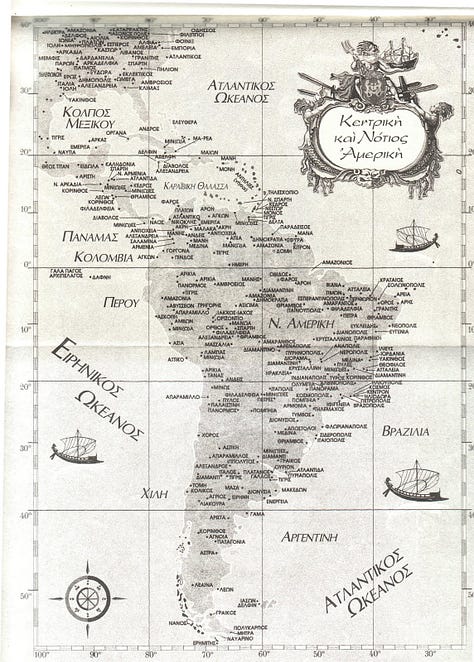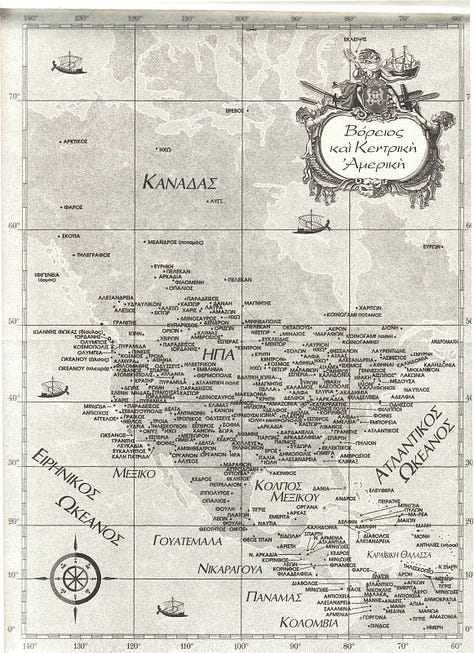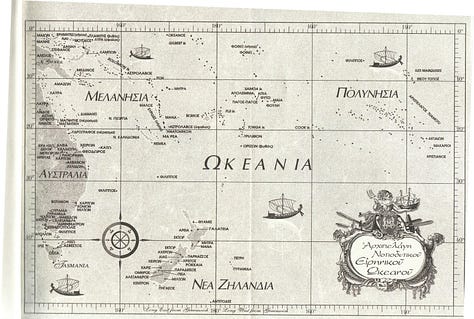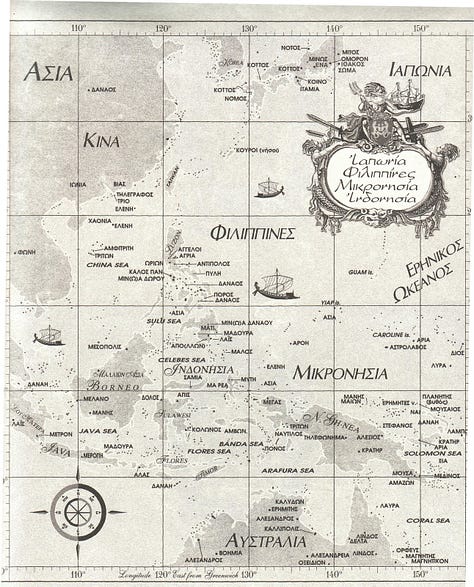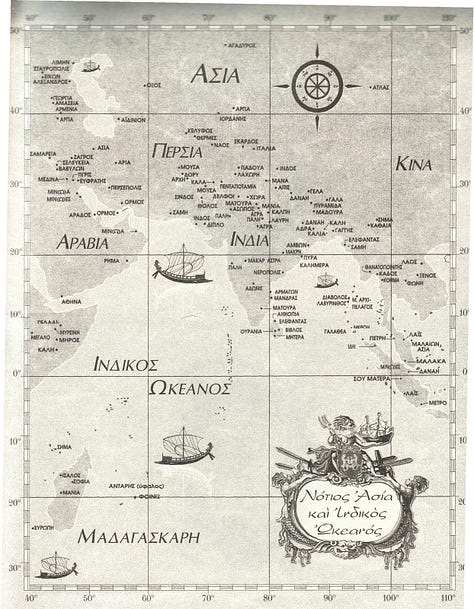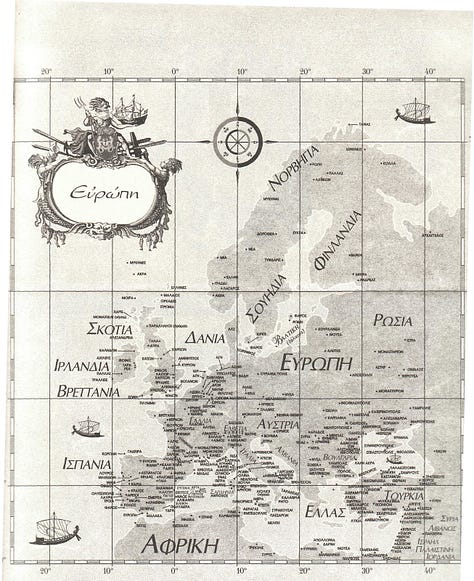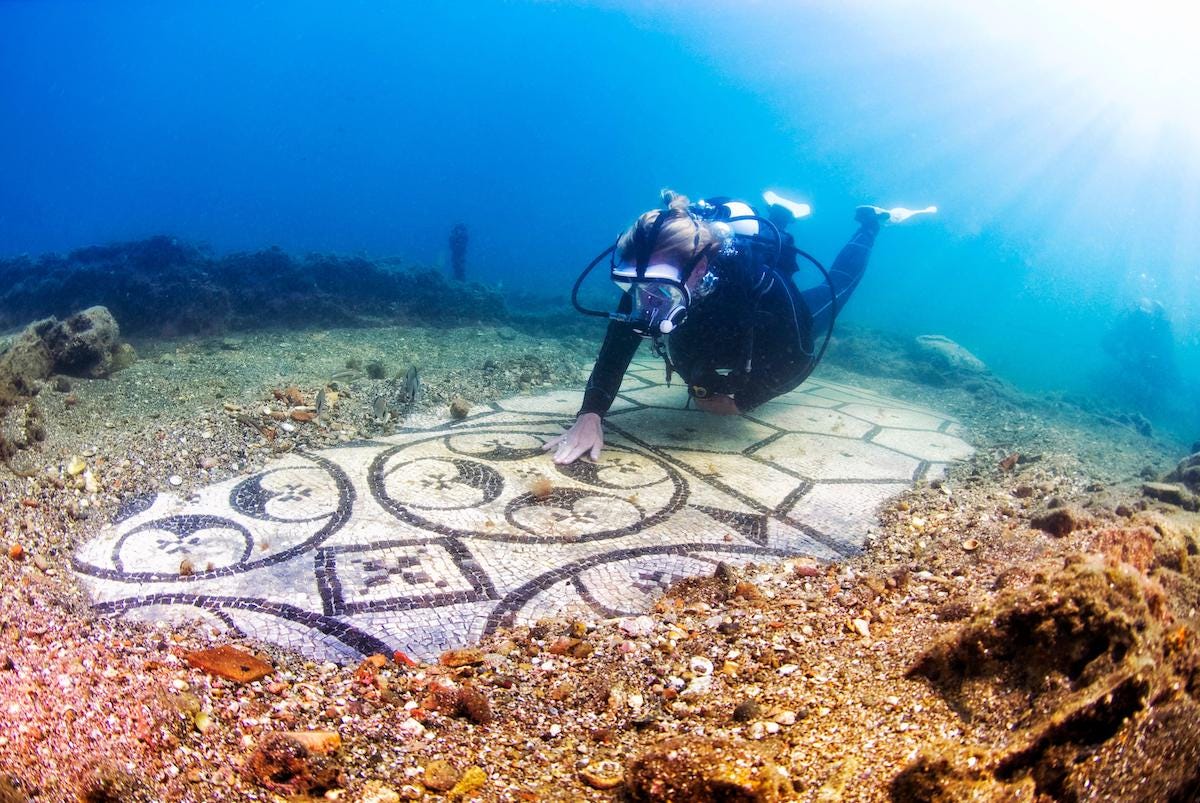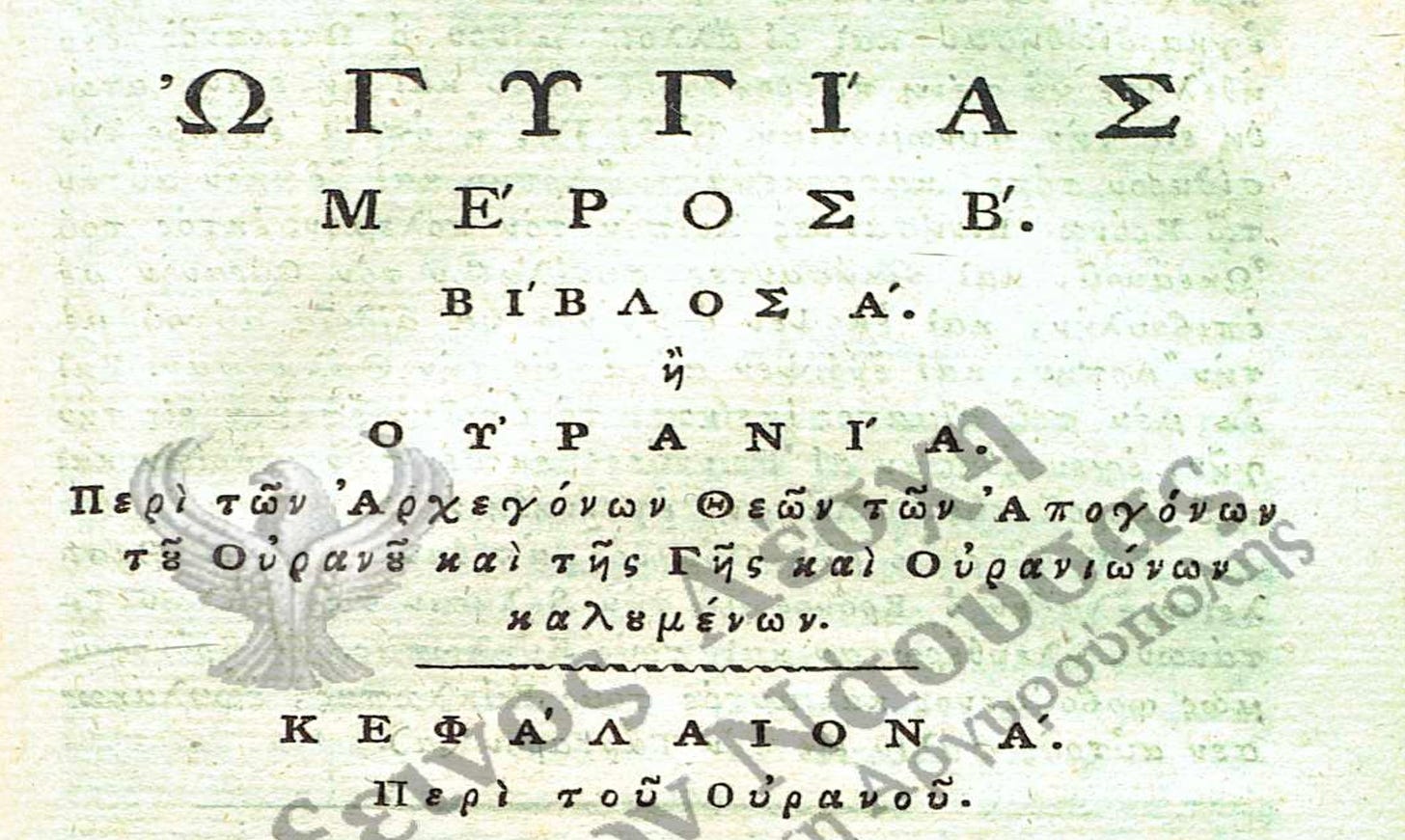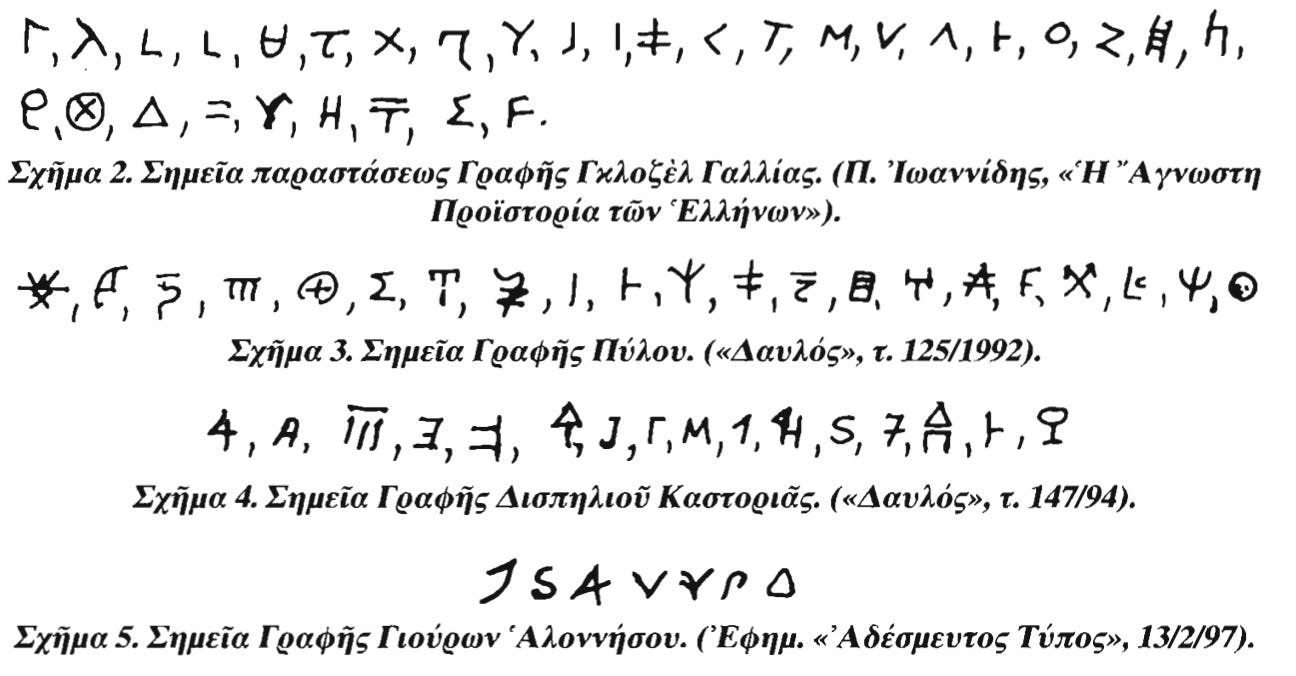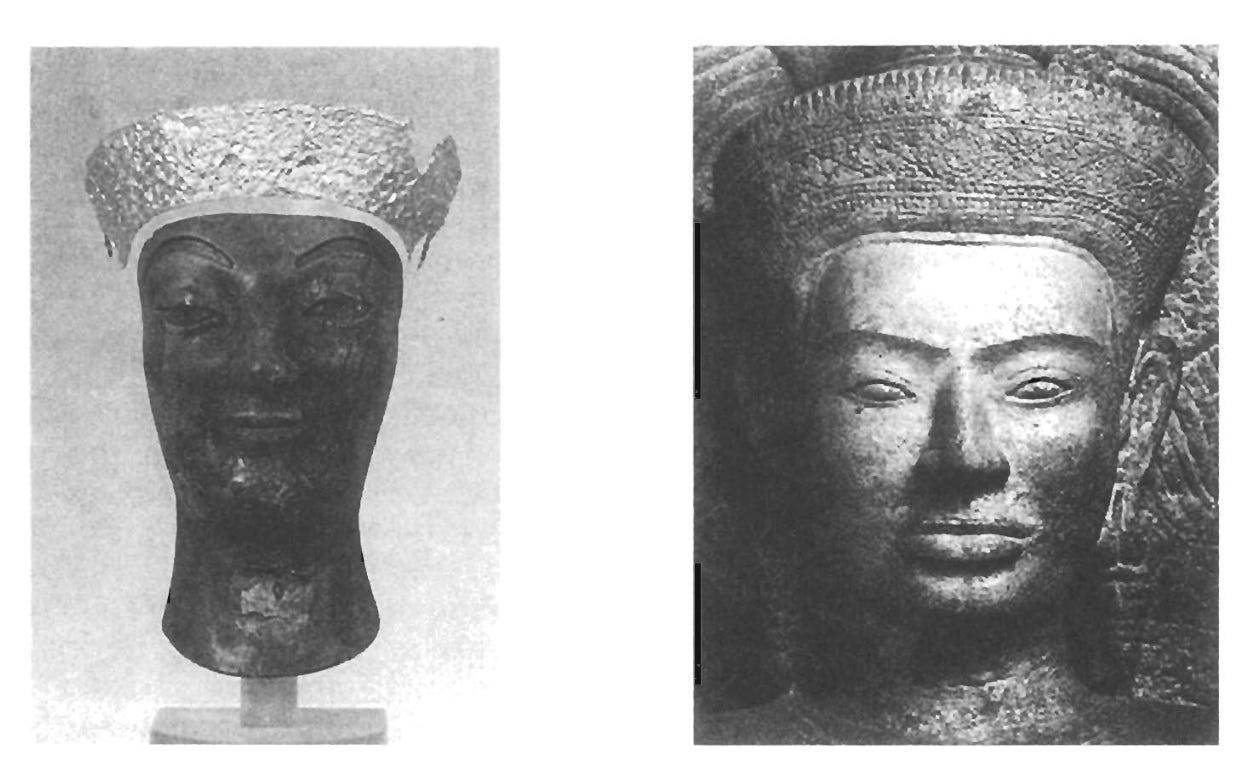The Origins of the White Pelasgian Race
And it's Dravidian brothers and sisters. They did not come from Asia.
In this post, I shall bring forth the history of the ancients, based on multiple works. We will break down the clans and genealogies that unify the entirety of the White race under a common past, and also include some of the artifacts that are available today. This time, I will shall remain within the boundaries of our planet.
Submerged Cities of the era of Aegis
In the previous two posts about The Great War (Part 1 & Part 2), we spoke about the Nation of Aegis and its brother Nation of Atlantis, with the latter one becoming corrupt to begin a campaign for the - then - New World Order.
In the end, Aegis rose up and defeated the Atlanteans, but not without a dire cost.
After the massive devastation around the Mediterranean Valley, the Aegean clans moved primarily to the north of Europe, in search of vital space for survival. Due to the first gigantic floods, many of the cities submerged from the waters of the newly formed Atlantic Ocean. Several diver-archaeologists have been able to spot a few of them (more here) in the now Mediterranean Sea.
After the Great War of 9,650 BC/BCE
It is known that approximately 15,000 years ago, Northern Europe was covered in ice, which forced the population to remain toward the southern part of the continent and the northern parts of Africa, then known as Ethiopia.
Arcadia
After the destruction of Atlantis, the giant tidal waves and the volcanic eruptions, those who eventually remained in the southern part of Europa, created the new capital of their world, Argus (Argos), with its first king being Arcas. It was him who renamed the area from Pelasgia to Arcadia. The ones who were called the Pro-Selenians (pre-lunar) were originally Pelasgians, before they were renamed to Arcadians.
Due to the collapse of the flatland, the Arcadians had to learn to create mountain fields for plowing and avoid using animals-only for their survival. This is referenced in the “Arcadika” of Pausanias 1,6 and 4,2-1.
King Arcas was the first direct descendant of the past Pelasgian rulers of Aegis, namely Niktimos, Lycaeon, and Pelasgos. According to the work of “Ogygia” of Starigitou and Apollodoros, Arcas is also referenced as Phoroneus, brother of Io and Aegialeas. Due to the modular nature of the Hellenic language, the Aegialeas is broken down to Aegean-Alos, which translates to the shore line around Arcadia and within the sunken Aegis. Thus, Aegialeas means “the one who was born at the shores of the Aegean”. Hence the first historical appearance of the Aegean Sea.
Thus, Arcas became known as Phonoreus Arias and the founder of Argus. According to the historian Stravon, “Geographica A” :
“Πελασγοί αρχαίον φύλον κατά την Ελλάδα πάσαν επιπόλασαν -διασκορπισμένοι ευρισκόμενοι- και μάλιστα παρά τοις Αιολεύσι τοις κατά Θετταλίαν... και της Κρήτης έποικοι γεγονάσι ως φήσιν όμηρος, και Πελασγικόν Άργος, πολλοί δε και τα Ηπειρωτικά έθνη πελασγικά ειρήκασι, τον τε Δια τον Δωδωναίον αυτός ο ποιητής ονομάζει Πελασγικόν : Ζευ ανά Δωδωναίε Πελασγικέ.
Και την Λέσβον Πελασγίαν ειρήκασι… και την Πελοπόννησον δε Πελασγίαν φήσι Εύφορος κληθήναι… Αντικλείδης δε πρώτους φήσιν αυτοίς – Πελασγοίς- τα περί την Λήμνον και Ίμβρον είκησαι, και δη τούτο τινάς –Πελασγούς- και μετά Τυρρήνου του Άβυος εις την Ιταλίαν συνάραι –μετέβησαν- και οι την Άτθιδα συγγράψαντες ιστορούσι περί των Πελασγών, ως και Αθηνήσι γενομένων.”
What Stravon says is that the Pelasgians moved in various places, including Argus, Epirus (Dodona), Crete, the islands, Italy, and even “re-founded” Athens. The further moved to Cyprus, the Middle Eastern shores, Northern Africa, and near the Heraclean Pillars (Gibraltar).
This is also mentioned in Aeschylus work of “Iketides”.
The Phoenicians
According to the 4th tome of Ogygia, Argus, as the first capital of the survivors of Aegis, ruled for 484 years. The name of the city originated from Argos, son of Niobe and Zeus, and also grandson of Arcas Phoroneus, the first king we spoke of. The brother of Niobe, and son of Arcas, was Apis.
Apis is the same person who the Egyptians worshiped in the form of a taurus deity. However, it is said that he ruled his land, Apia, in a tyrannical manner, thus he was forced to move to Egypt, where he founded a colony among the surviving Pelasgians and became their first king.
The genealogy of Arcas continues with his sons:
Arcas > Forvandas > Triopas > Jason (Iasonas) > Aeginor.
Aeginor, due to his tyrannical rule, was exiled to Asia Minor where his son Phoenix was born. As a tribute to his son, Aeginor originally named the land as Phoenicia and they both hated their Pelasgian peers for their exile. Thus, began the animosity between the later Hellenes/Greeks and the Phoenicians. It was a civil dispute that would result in wars between them. Pelasgian Phoenicians versus Pelasgean Hellenes.
In 1,943 BC/BCE the Semite-Mongolian Hyksos arrived in the area and used the animosity between the Phoenicians and the Hellenes for their own benefit. In short, they manipulated the Phoenicians because of their formidable navy. Thus, the mainstream historians claim that it was the Phoenicians who gave the alphabet to the Hellenes is a straight out fabrication by the descendants of the Hyksos, the Jews.
It is worthwhile to mention that prior to the naval strength of the Phoenicians, the rulers of the sea were the Minoans. Before them, the Pelasgians of Argolis, and before them, the Metropolitan Pelasgians.
The Indians and the Medeans (Persians)
Aside from the Pelasgians, there was part of its population referenced as Dravidians, which we will cover below. They were more diverse in their skin, hair, and eye color. Like the Pelasgians, they too were citizens of Aegis.
According to Diodorus Sikeliotis, Gamma 62, Arrianus E, A, 4, 5, 8 and Apollodorus, the Dravidians, under the leadership of Dionysus (the historic figure, not the deity) departed the ruins of Aegis to inhabit the Indian peninsula.
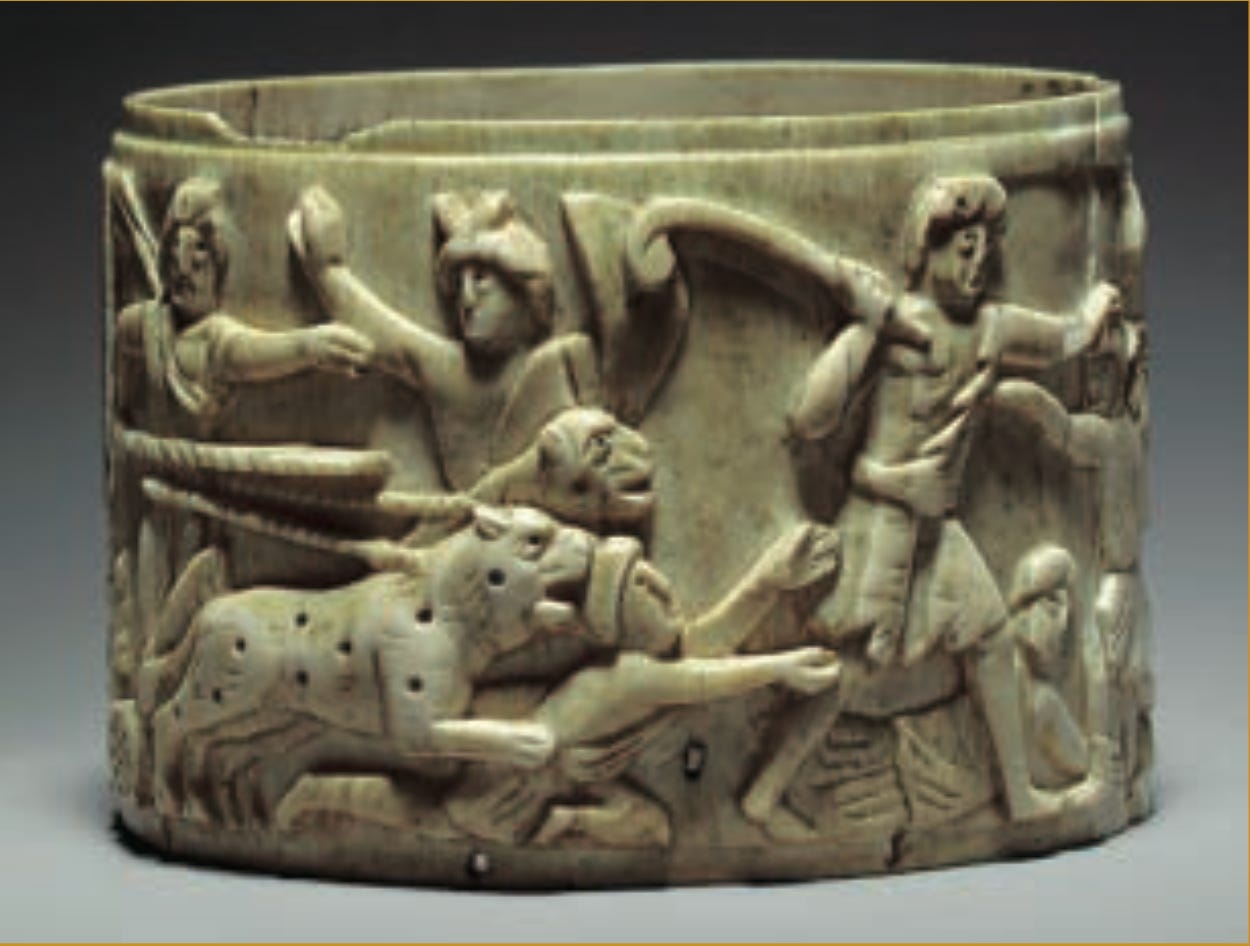
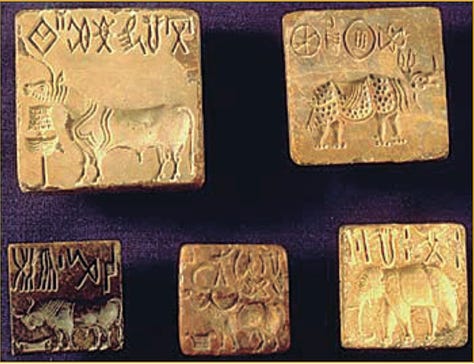

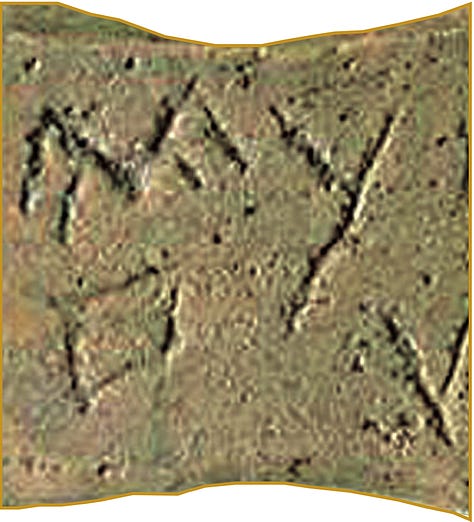
The 4th Tome of “Ogygia”, alongside Apollodorus, reveals the origins of the Medans, also known in later history as Persians. According to them, Medea left her husband Pelasgos Korinthos, and escaped to Athens, where she gave birth to her son Medos who later became the forefather of the nation of Medea, later known as Persia.
To that end, let’s also refer to Perseus. We had a brief mention about him in the myth of Perseus in Andromeda. According to Yginus 64-244, “Ogygia” of Stagiritus, Eratosthenes KB, Tzetzis’ Lycophrona 838, the son of Perseus was called Persis. He was the one who founded Artaia in ancient Persia, a city whose inhabitants were known as the “Heroes of Persia” as they were considered to be the bloodline of Zeus.
The Rest of the World
Without going into too much detail, due to the length of this post, it is worthwhile to mention that the Aegean civilization - both in its Pelasgian and Dravidian identity - was so spread out, that we find its elements even in the Pacific Ocean.
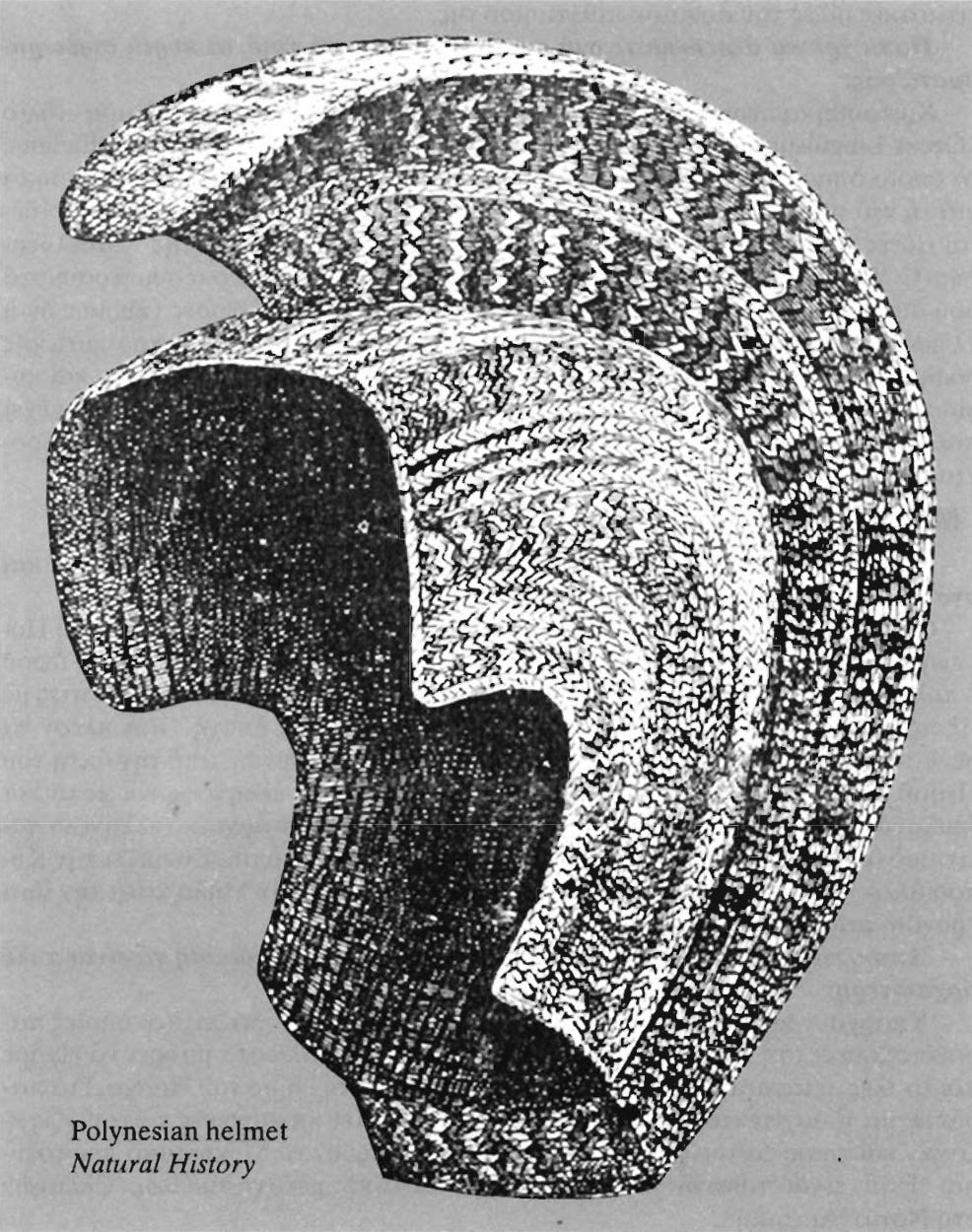
Professor Nors S. Josephson has done an extensive research the linguistic connection of the Pacific Islands with the ancient Hellenic Pelasgian language.
From the Pelasgian moves to the north, we discover similarities in their ancient writings, like the ones below:
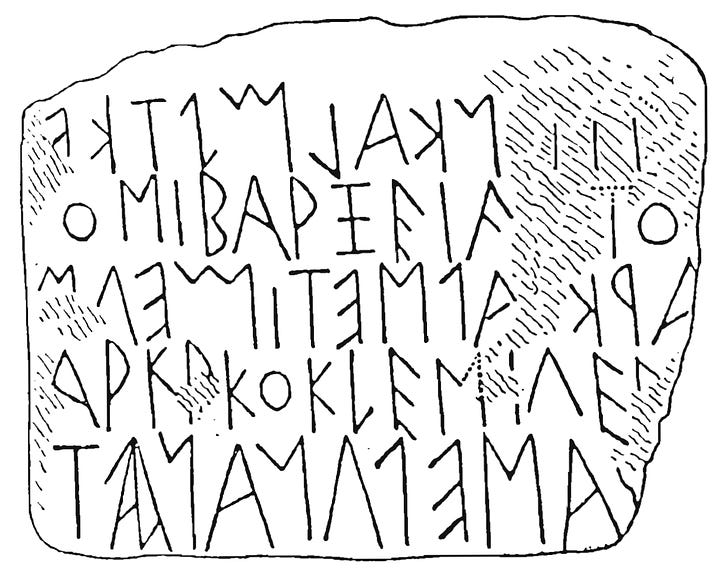
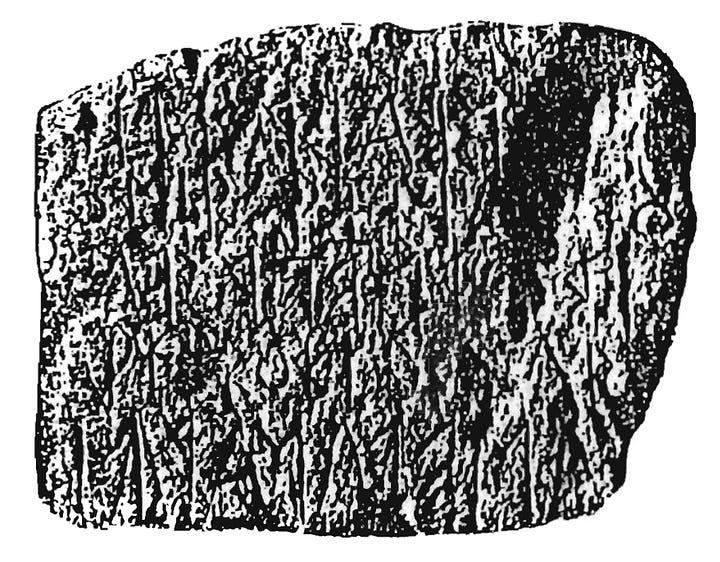
Below, you will see the similarities of the Delphic Statue of Artemis and the Statue of Buddha, especially the crown:
Even in the Far East we still see elements that depict symbols of the ancient Pelasgian Minoans
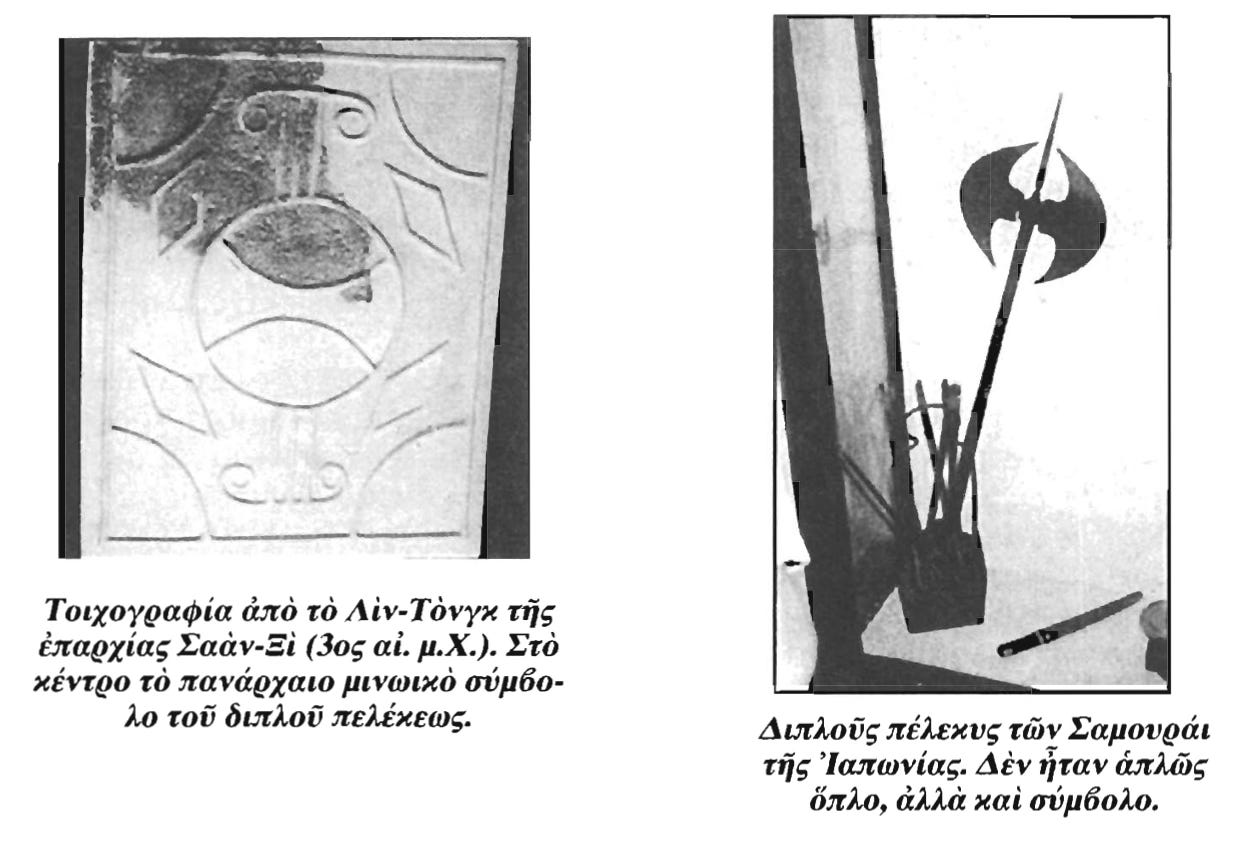
The Druids
This is where we shall cover the Dravidians.
After the formation of the first Priest Orders (another chapter that I will cover later), there was a word that had great value within the temples. That word was ΔΡΥΣ (Drys). You may have heard of the “Younger Dryas”. It was exactly due to that reference.
The word Drys was attributed to a tree, the fruits of which granted the people of Aegis great vitality and strength. Because of it, members of the nation’s populace were called ΔΡΑΥΙΣ and their “clan” was later known as Δραυίδιοι (Dravidians).
The sacredness of the ΔΡΥΣ soon became a “forbidden tree” by the Priest Orders.
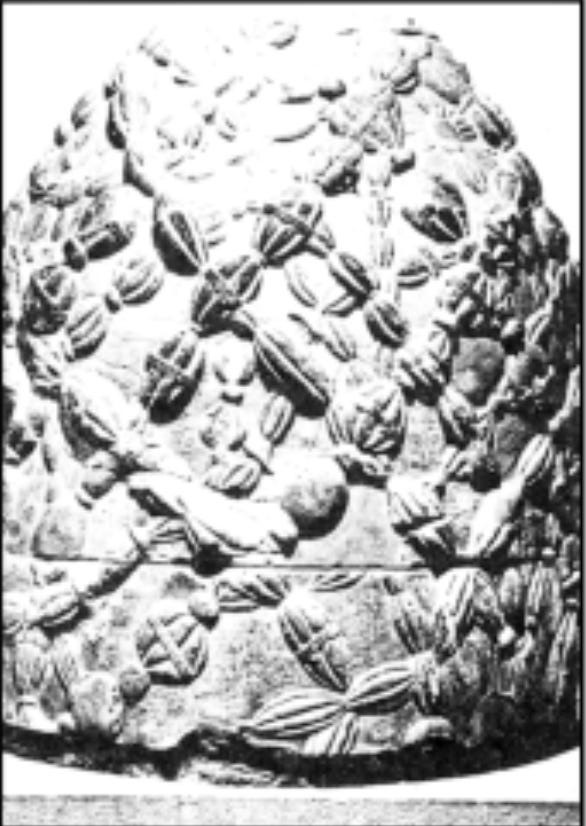
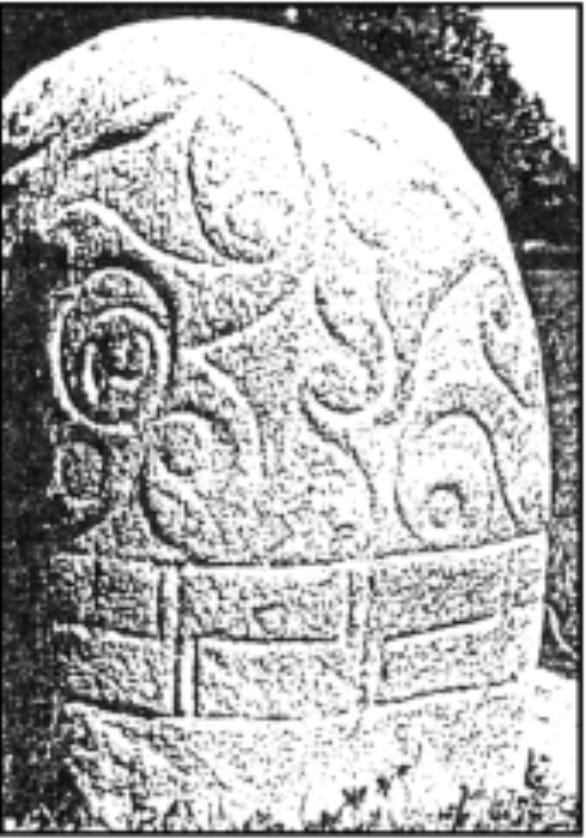
Pausanias mentions that the fruits of the ΔΡΥΣ tree to be preferred by the people, as they were the most potent in terms of nutrition. Through him, we learn that the ΔΡΥΣ was actually the Acorn tree, which were in abundance in the mainland of Aegis, and Hellas after the Great War.
Due to the use of the ΔΡΥΙΣ acorns, the Aegis was also referenced as ΔΡΑΥΙΣ or Dravis.
The tradition of the ΔΡΥΙΣ was later transferred to the nature priests of the northwest Europa, where their title became known as ΔΡΥΙΔΕΣ or Druids.
It is no etymological accident that the word ΑΝ-ΔΡΑΣ (what the West calls “the real man”) and the word ΑΝ-ΔΡΕΙΑ (bravery) originates from that era.
Conclusively
As far as I could expand on this article, I believe I offered you an initial idea of where the initial populations of the Pelasgian and Dravidian people came from. Prior to the Great War, they were mainly gathered in the area of Europa and Northern Africa (called Ethiopia at the time). After the catastrophe, many moved seeking a place to survive.
If we take into account that two more major disasters hit our planet in 8,255 BC/BCE and 3,615 BC/BCE, the spread became even wider. It is as the Egyptian Priest said to Solon in Plato. To paraphrase it: “Due to the disasters in your region, you had to leave; and due to our geological stability, we became the vault of your knowledge.”
Thus, in the depths of the past, the Pelasgian and Dravidian people became widespread. They did not come from Asia as “Indo-Europeans”. Instead, descendants of Aegis migrated to Asia, due to the continuous disasters.
I would have covered much more ground per the founding of other Pelasgian and Dravidian nations throughout the world from people like: Ianos, Etruskos Tyrrinos, Gelonas, Dionysus, Artaios, Philippos, Ares, Arimaspos, Galaxias, Geramos, Italos, Bucinus Thareos (Thor), Sakonas, Eretos, Kilonas, Karpathos, Mythonas, Avanos, Moros, and many others.
The number of descending nations and cities they created throughout the millennia is staggering.
All of us have been descendants of a great civilization which the Dragon, its slaves, and the Atlanteans despise. Now, you can get an idea of the primordial hatred against the Pelasgian and Dravidian people. We stopped their conquest and they have been trying to wipe us out ever since.
This is the history the Eastern overlords have been erasing.
In a next chapter, I will dive into the “vengeance” of the Dragon and how our people suffered 7 hordes over the course of 3,500 years. These campaigns ended up with the infiltration of the now Western World.
There are no coincidences, no accidents.
Here are a few maps with Pelasgian/Dravidian toponyms throughout our world, as taken from historical and mythological references:
